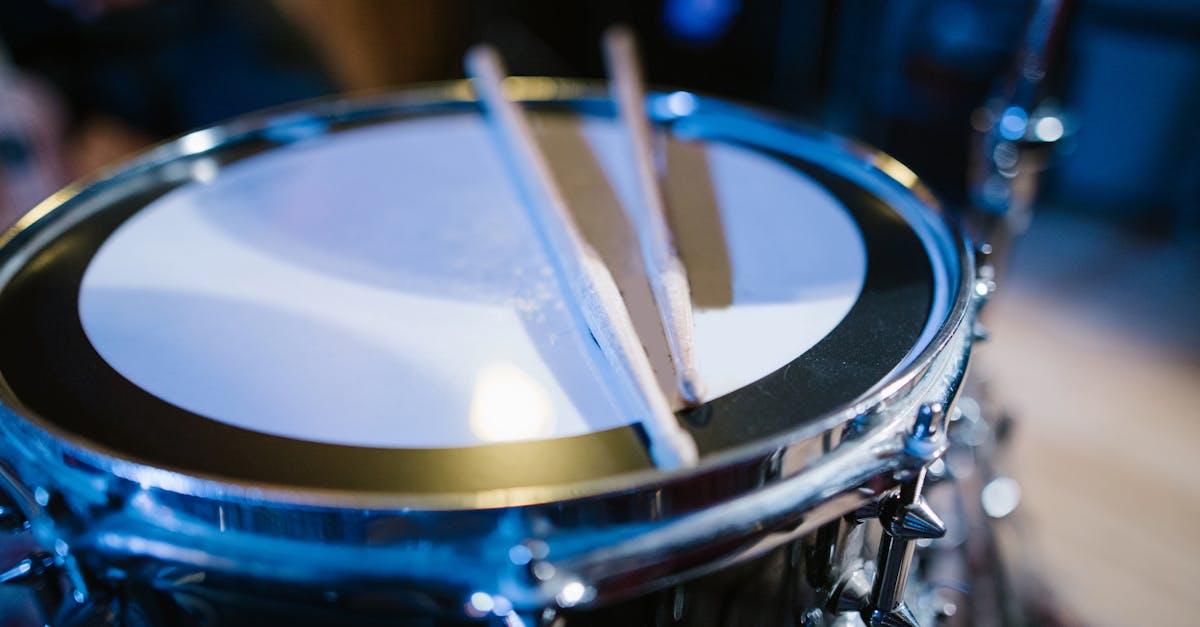Harmonic Echoes Journey Through World Rhythms
Introduction
Music transcends cultural and geographical boundaries, acting as a universal language that unites people worldwide. Amongst the vast array of musical genres, world rhythms stand out for their diversity and rich heritage. Harmonic Echoes embarks on an enthralling journey to explore these diverse rhythms, celebrating their origins and roles in their respective cultures. As we delve into various musical styles, we uncover how these beats create connections and provoke emotions across generations. Each rhythm tells a story of its cultural roots and sounds echoes of history, tradition, and innovation. Let us embark on an exploration of some of the most captivating world rhythms.
Advertisement
Africa's Pulse: The Heartbeat of Rhythms
Africa, often referred to as the cradle of rhythm, offers a mosaic of beat-driven sounds that capture the essence of its people's spirit. Drumming forms an integral part of African music, with the djembe, a goblet-shaped drum, being central to much of the continent's musical traditions. From the high-energy beats of West African Afrobeat to the soul-stirring cadence of South African kwaito, African rhythms tell tales of celebration, resistance, and life. These beats often feature complex polyrhythmic structures, where different rhythms overlay to create harmonious vibrations. Musical genres such as highlife and juju encapsulate the continent's historical narrative, fostering unity and cultural identity.
Advertisement
Samba and Carnival: The Pulse of Brazil
Brazil, a melting pot of cultures, is synonymous with its rhythmic heartbeat, the samba. With its origins rooted in Africa, samba evolved in Rio de Janeiro, transforming into a prominent representation of Brazilian identity. This lively rhythm is characterized by its brisk tempo and syncopated beats, performed during vibrant carnival parades. Percussive instruments such as the surdo, tamborim, and agogô lay the foundation, elevating the festive atmosphere. Beyond samba, Brazil offers a fusion of rhythms such as forró, bossa nova, and Axé, reflecting its diverse cultural heritage. Brazilian music illustrates the fusion of indigenous, African, and European influences.
Advertisement
India's Melodic Tapestry: The Rhythms of Diversity
India presents a vast expanse of rhythmic variations woven into its cultural fabric. From the intricate tabla patterns in Hindustani classical music to the foot-tapping beats of Bollywood, Indian music showcases rhythmic versatility. The Carnatic style from South India is noted for its math-based rhythmic cycles known as 'tala,' offering a complex tapestry of beats and tempo changes. Folk traditions, such as the energetic Bhangra from Punjab and the mystical beats of Rajasthani ghoomar, add to India's musical mosaic. Indian rhythms often play a spiritual role, fostering cultural continuity and a profound sense of tradition.
Advertisement
Flamenco: The Rhythmic Soul of Spain
Flamenco, an art form deeply entwined with Spain's cultural identity, combines rhythmic guitar playing, passionate singing, and dynamic dance. This rhythmic genre originated in the Andalusian region and incorporates Romani, Islamic, and Sephardic influences. Flamenco is characterized by its varied rhythmic structures known as 'compás,' providing a backbone to the expressive movements and soulful vocals. Instruments such as the cajón and castanets accentuate the percussive essence, creating an emotionally charged performance. As a living tradition, flamenco continues to evolve, capturing the essence of the performers' emotions and cultural storylines.
Advertisement
Caribbean Vibes: Calypso and Reggae
The Caribbean islands pulse with rhythms that resonate with stories of resilience and celebration, epitomized by calypso and reggae. Originating in Trinidad and Tobago, calypso employs storytelling and satire layered over steel pan and percussion instruments. These rhythms encompass themes of freedom and challenge political narratives. On the other hand, reggae, with its roots in Jamaica, embodies a laid-back groove with socially conscious lyrics. With reggae legends like Bob Marley as ambassadors, this rhythm has become a conduit for peace, love, and unification. Caribbean rhythms continue to infuse the global music stage with infectious joy and radiant positivity.
Advertisement
Middle Eastern Maqamat and Rhythms
The Middle East offers a rich tapestry of maqamat (melodic modes) combined with distinct beats that embody the soul of its musical traditions. Rhythms in this region often employ complex structures such as samai and maqsum, emphasizing intricate patterns. Instruments like the doumbek, daf, and oud guide these mesmerizing rhythms, creating hypnotic melodies. Sufi music, particularly in Turkey and Pakistan, uses repetitive beats to accompany spiritual practices, facilitating a connection with the divine. The ornate ornamentation and improvisational nature of Middle Eastern music accentuate the emotive storytelling intrinsic to the region's rhythms.
Advertisement
The Celtic Beat: A Dance of Joy
Celtic music, primarily associated with Ireland and Scotland, lures listeners with its lively beats and melodies that indeed invoke dance. Traditional tunes such as jigs, reels, and hornpipes feature fast-paced rhythms played on instruments like the fiddle, tin whistle, and bodhrán. These rhythms, often played at social gatherings and ceilidhs, form a joyful celebration of Celtic heritage, fostering community bonds. Celtic rhythms carry folklore and history, celebrating the resilience and passion of its people. As these beats mingle with contemporary music, they sustain a legacy that continues to enchant audiences globally.
Advertisement
Conclusion: The Universal Language of Rhythm
World rhythms encompass a plethora of beats and sounds that narrate tales of culture, tradition, and human emotion. Harmonic Echoes' journey through these musical landscapes has proven that rhythm is the vehicle of connection transcending language barriers. Diverse rhythms, from African drumbeats to Indian tala cycles, inspire creativity, unity, and understanding. As we appreciate the rich heritage of world rhythms, we are reminded that amidst the uniqueness of our cultures and histories, music remains a shared human experience. Harmonic Echoes' exploration challenges us to continue this journey, bridging cultures and creating harmonious echoes across the globe.
Advertisement







